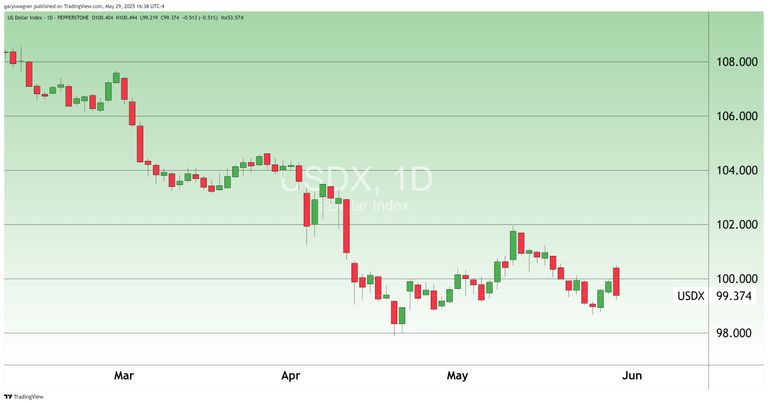(Kitco Commentary) - Gold futures surged nearly 1% in today's trading session, with the most active June contract gaining approximately $30 as investors responded to a confluence of economic developments that strengthened the precious metal's appeal. The rally represents a significant rebound from recent weekly lows, driven primarily by dollar weakness and concerning employment data.

The primary catalyst for gold's advance was a notable weakening in the US dollar, which declined 0.6% as measured by the dollar index. This currency depreciation created favorable conditions for gold, as the precious metal typically moves inversely to the greenback. The dollar's decline reflected market concerns over recent economic contraction data and ongoing uncertainty surrounding trade policy implementation.
The currency's weakness was amplified by a court ruling that challenged the legality of certain emergency tariffs, though tariffs on steel and aluminum remain in effect. President Trump has indicated his intention to contest these legal challenges, adding another layer of uncertainty to the economic landscape. However, market analysts suggest that the court ruling had a minimal direct impact on gold prices compared to other fundamental factors.
The more significant driver of gold's rally was the release of disappointing employment data that exceeded market expectations for the wrong reasons. Initial jobless claims for the week ending May 24 rose to 240,000, up from the previous week's 226,000 and surpassing economist forecasts of 230,000. This uptick in unemployment claims has intensified speculation about potential Federal Reserve policy shifts.
The employment data has increased pressure on the Federal Reserve to consider interest rate cuts, which would further weaken the dollar and enhance gold's attractiveness as a non-yielding asset. Lower interest rates reduce the opportunity cost of holding gold, making it more appealing to investors seeking portfolio diversification and inflation protection.
The employment report comes amid heightened political pressure on Federal Reserve Chair Jerome Powell regarding monetary policy direction. Powell recently met with President Trump following the president's public criticism of the Federal Reserve's decision to maintain current interest rates. The Fed Chair has emphasized the central bank's independence from political influence, stating that monetary policy decisions will continue to be data-driven rather than politically motivated.
Powell's commitment to independence was evident in his recent comments regarding presidential meetings: "I don't think it's up to a Fed chair to seek a meeting with the president, although maybe some have done so. I've never done so, and I can't imagine myself doing that." This stance reinforces the Federal Reserve's traditional separation from executive branch pressure.
Despite the concerning employment data and GDP contraction, market indicators suggest limited expectations for immediate monetary policy changes. The CME Fed Watch tool indicates only a 5.6% probability of a rate cut at the upcoming June 18 Federal Open Market Committee meeting, a figure that remained relatively stable even after today's economic releases from the Labor Department and Bureau of Economic Analysis.
Powell's data-dependent approach to monetary policy suggests that a single week of elevated jobless claims and GDP weakness may not be sufficient to trigger immediate policy action. The Federal Reserve typically requires sustained economic deterioration before implementing significant policy shifts.
For those who wish to learn more about our services, please Click Here.
Wishing you as always good trading,

